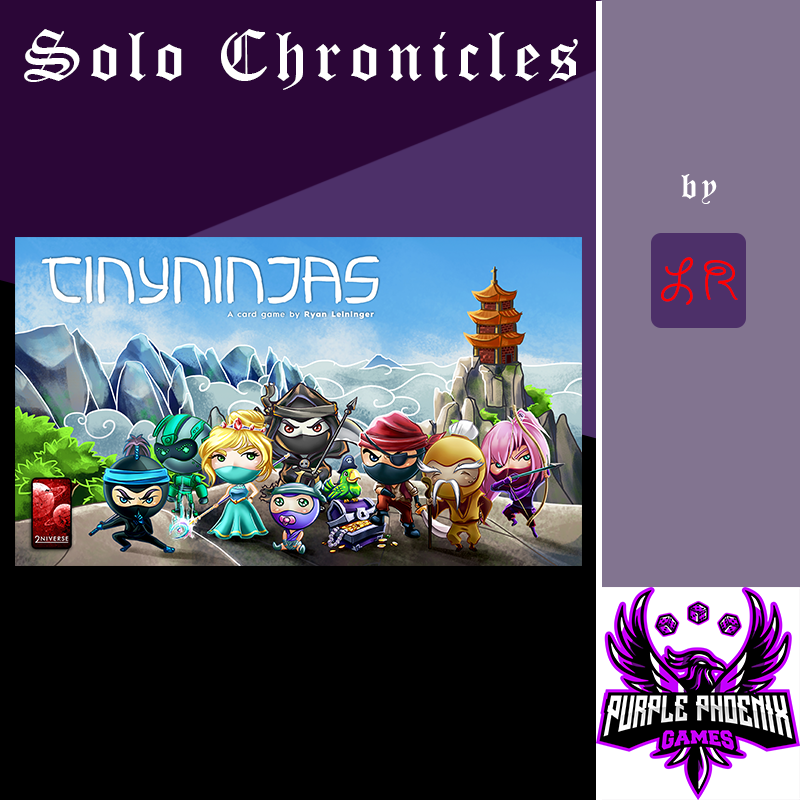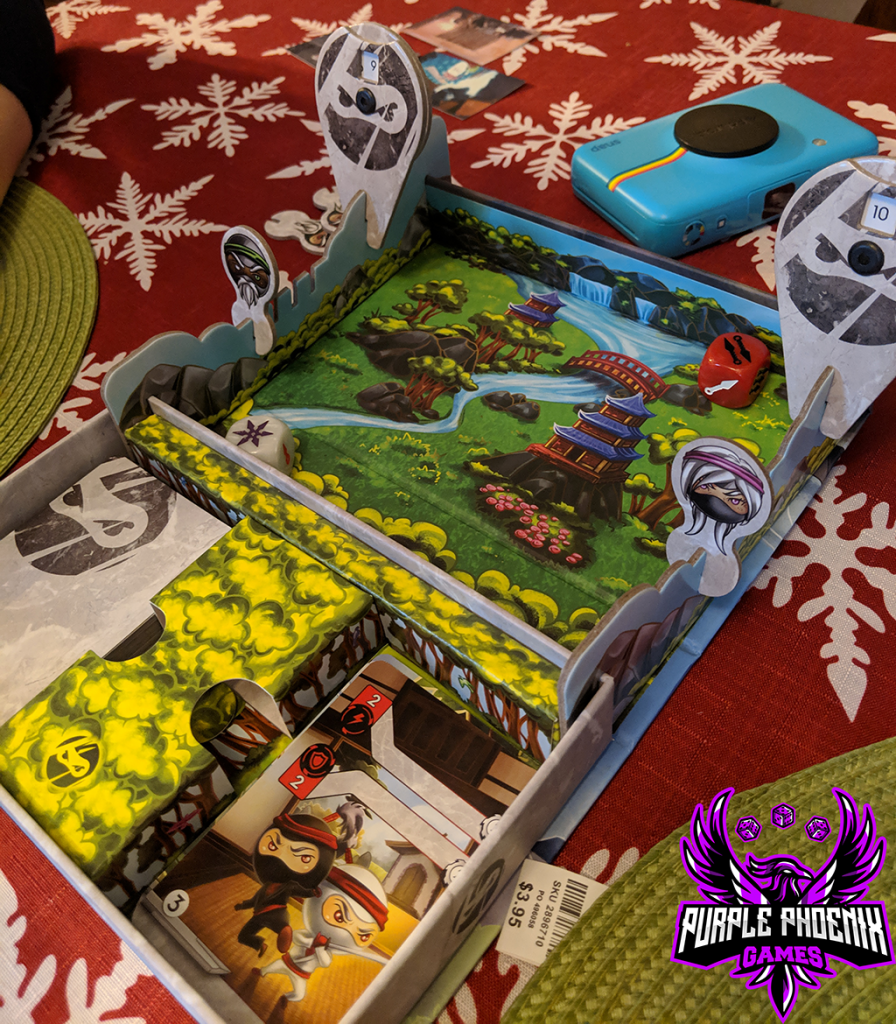
One of the best parts of the board gaming experience is finding a fun group of people with whom to play! Sometimes, though, coordinating a game night is easier said than done. We all must occasionally forego the group experience and face the world as the Lonely Only. But fear not! The world of solo-play is a vast and exciting realm! What follows is a chronicle of my journey into the solo-playing world – notes on gameplay, mechanics, rules, difficulty, and overall experience with solo variations of commonly multiplayer games! I hope this will provide some insight as you continue to grow your collection, or explore your already owned games!
| Tiny Ninjas (2019) | 2niverse Games |
| 1-2 Players | 10-15 minutes |
| Ages 8+ | BGG Weight – 1.33 / 5 |
As the master Sensei, you have trained many ninjas throughout your lifetime. You have helped each and every one of them hone their unique skills, and they have been very successful in the ninja world. One day, an old rival from your youth shows up with a group of their own students and challenges you to a ninja battle! To defend your honor and to prove that you are indeed a master Sensei, your students (with your guidance, of course) will put their training to the test to defeat these challengers once and for all!
Tiny Ninjas is a competitive two-player game in which players alternate turns attacking their opponent and defending incoming damage. Gameplay is a blend of hand management and dice-rolling, and strategy is dependent upon the card currently in play. As a solo game, Tiny Ninjas plays essentially the same way – the only major difference is that instead of a live opponent, you play against AI. Logistically, you still have a hand of cards from which to choose, but the AI cards always come from the top of the draw deck.
The biggest difference with solo mode is that the AI always plays a card before you do – even if you are the attacker and would normally play your card first. Here’s how your attacking turns work: 1.) You decide to attack, 2.) AI card is revealed and defense is determined, 3.) You play your attack card. The first few times I played Tiny Ninjas solo, I didn’t understand why I had to reveal the defense card before my attack card – it kind of felt like I was cheating! I knew what the defense was going to be before I even had to decide with which card to attack, so how was that fair? The more I’ve played, though, I’ve figured out that it doesn’t really matter that much. Since almost all of the cards require a dice roll to determine specific attack/defense points, there really was no way I could guarantee that I was going to win an attack. Yeah, maybe knowing the color of the defense could impact your attack card choice, but it will mostly come down to the luck of the roll. And I may have all of the best attacking cards in my hand, but unless I can roll the desired results, they could turn out to be duds!
Obviously, when the AI attacks, it would make sense that their card is played first, so that half of the turn makes sense. When the AI is the attacker, however, it always attacks only 3 times. That negates some of the ‘press-your-luck’ aspect of the game, and makes it a little easier to strategize since you know it has a finite amount of moves each round. That’s not necessarily a bad thing, it just changes the atmosphere of the game a little bit – sometimes I am safe for another round only because the AI already played its 3 cards. I know that had I been playing with a live opponent, they would have played another card in hopes of winning the game then and there.
I really like Tiny Ninjas as both a duel and solo game. It feels like a good balance of strategy and luck, and for a game with only 58 cards, it hasn’t felt repetitive to me. I recommend you try Tiny Ninjas as a solo game – I think it’s as fun as the original!

